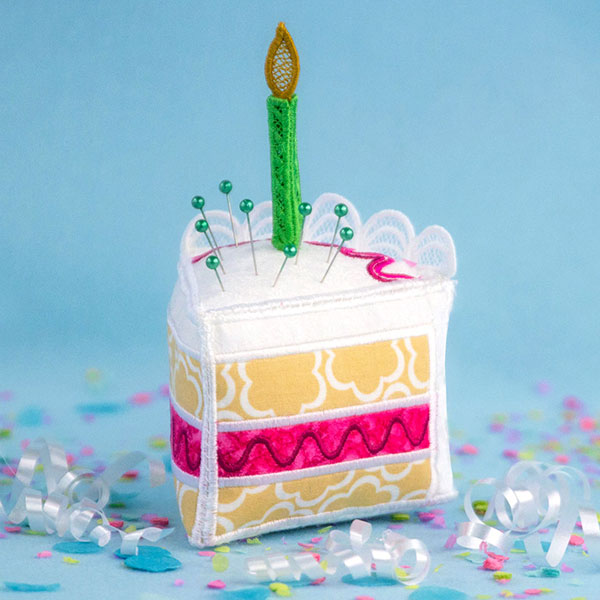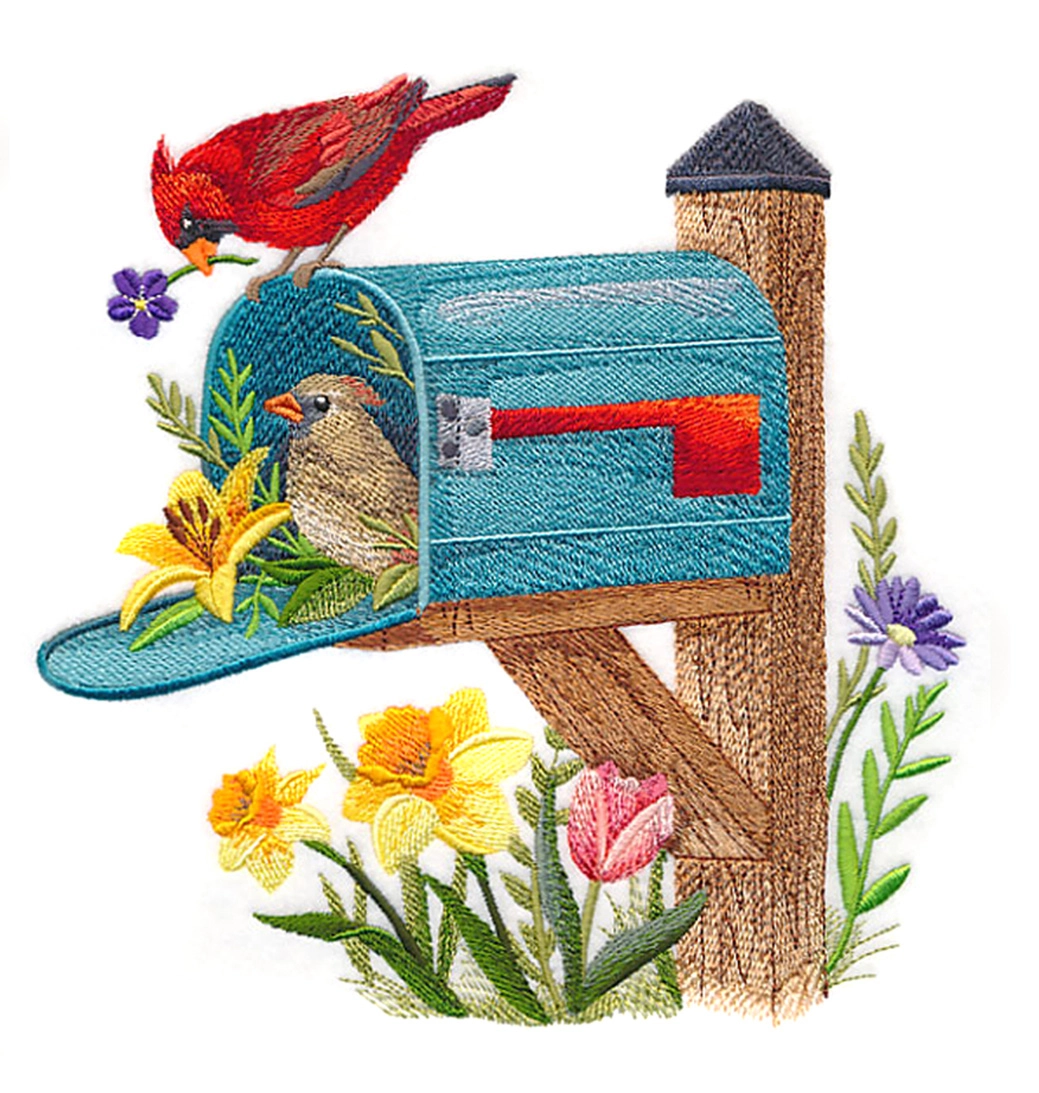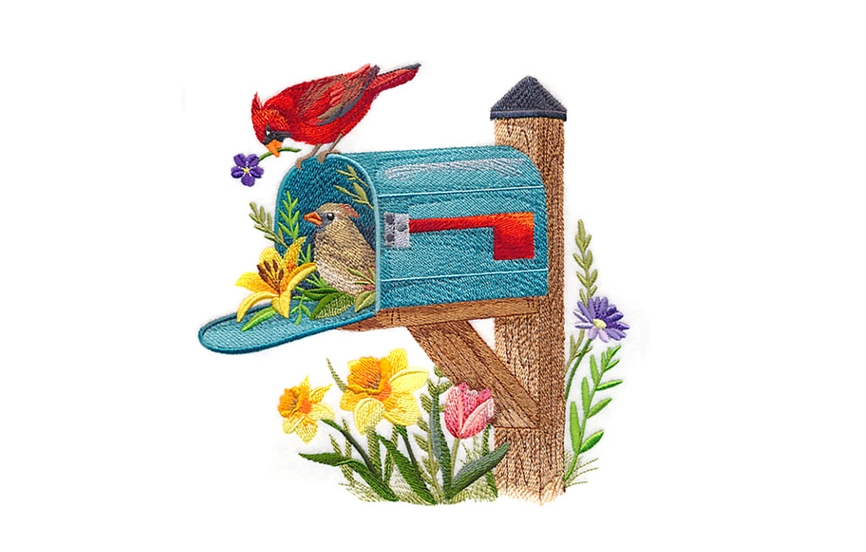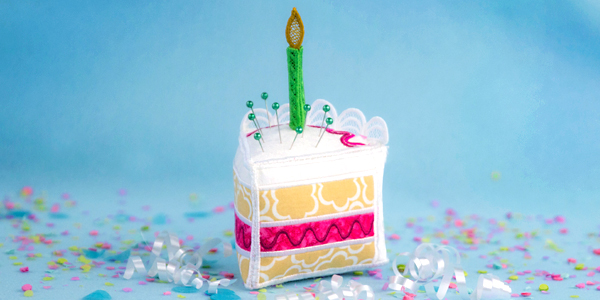
Have your cake and stitch it too with this delicious in-the-hoop machine embroidery design! Stitch each panel separately, then assemble and stuff. Follow along with the instructions below!
Supplies
Project Needs & Notes:
- 1/8 yard of white quilters cotton (for frosting)
- 1/8 yard of tan quilters cotton (for inner cake)
- 1/8 yard of pink quilters cotton (for filling)
- Tearaway stabilizer
- Heavy water-soluble stabilizer (such as Vilene or Sulky Ultra Solvy)
- Temporary spray adhesive (such as Gunold's KK100)
- Polyester fiberfill
- Needle and thread for hand sewing, or fabric glue
Design featured in this tutorial:
- X13868, Cake Pincushion (In-the-Hoop)
Finished Size: 3 1/2" wide x 2 3/4" deep x 3 1/2" tall without candle or 6" tall with candle
Special Notes:
To make a whole cake, embroider and assemble six whole slices. If doing this, make sure to buy 1/2 yard of the white quilter's cotton instead of 1/8 yard.
In this tutorial the cake pincushion is sewn together by hand. If desired, you can also use fabric glue to assemble the cake. Simply make sure to hold the pieces together until the glue completely dries for best results.
Designs Used
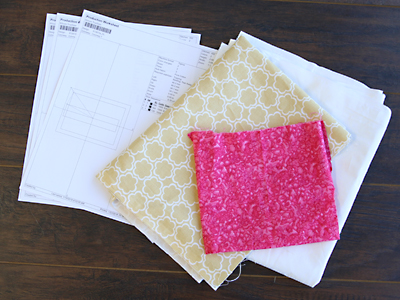
When you download the Cake Pincushion (In-the-Hoop) design, you'll find thirteen files. Eight are embroidery files (labeled a-h), and the other five are dieline files, marked with the letters DL. Dielines are used to cut the fabric to the right shape and size.
Open and print each dieline file using embroidery software. If you do not have embroidery software, take a look at our helpful video on using dielines without software. We also recommend Wilcom's Hatch software which comes in different levels depending on what you'd like to use the software for. Hatch Organizer works well to view your designs, print dielines and templates, change design colors, and create basic design layouts. (This is an affiliate link, learn more about affiliate links here)
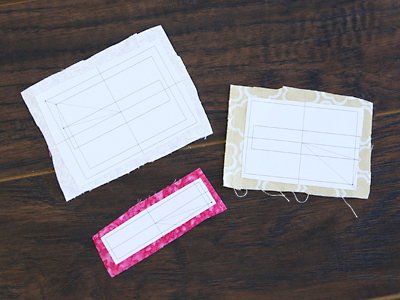
Print out three copies of the dieline "a" as the three pieces are together in one file. Cut around the paper dieline shapes, and spray the back of them. Then smooth them onto the appropriate quilter's cotton.
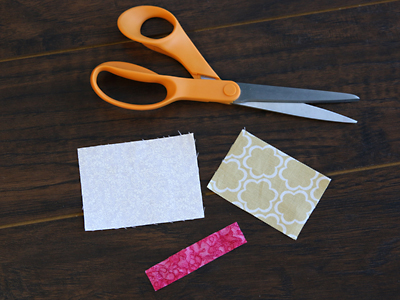
Cut out the shapes, and remove the paper dielines from the fabric.
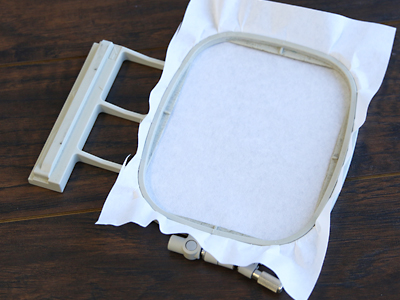
Hoop a piece of tear-away stabilizer. Madeira E-Zee Tear 1.5 oz. or Floriani Tearaway Medium are good choices. Those brands are more fibrous, less paper-like, and will tear more cleanly.
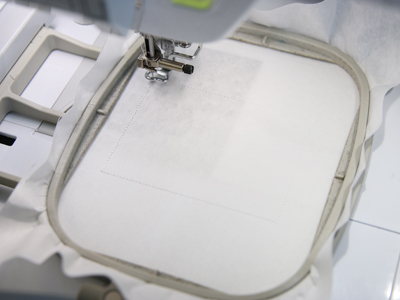
Attach the hoop to the machine and load the full embroidery file "a" (not the dieline files).
Use a size 11 or 75/11 sharp sewing needle, rather than an embroidery needle. A sharp sewing needle has a smaller, finer point than an embroidery needle, so that will make smaller perforations in the stabilizer.
Embroider the design. The first thing to embroider will be the "frosting layer dieline." This marks the area on the stabilizer where we'll place the first fabric piece.
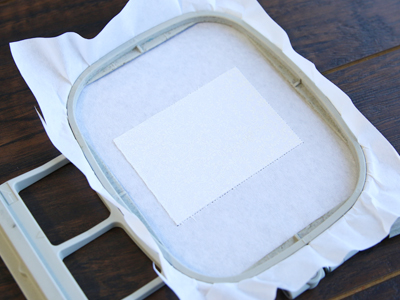
Remove the hoop from the machine, but do not unhoop the stabilizer. Spray the back of the frosting fabric piece with a temporary adhesive, and place it right inside the sewn dieline.
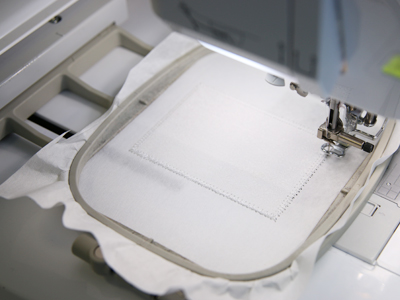
Attach the hoop back onto the machine and continue to embroider the design. A tack down stitch will sew next. This binds the fabric in place for the remainder of the design.
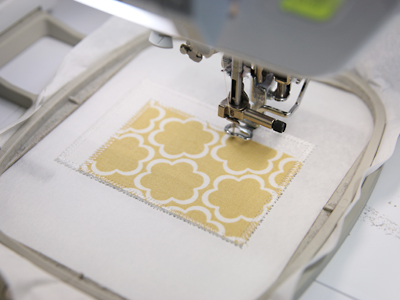
Next the "cake dieline" will sew. Spray the backside of the second fabric piece, and repeat the previous steps to add it on top of the first. Continue embroidering the design. A tackdown will sew to hold the piece in place.
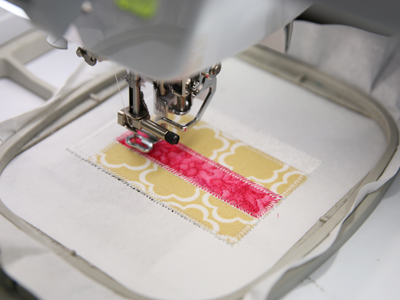
Then repeat the steps again to add the third fabric piece. Sew the "filling dieline," spray the back of the fabric piece, place it in the dieline, and sew out the tackdown.
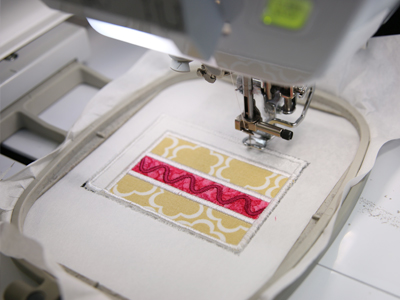
Once all the fabric pieces are in place, the inner details will sew along with the finishing borders.
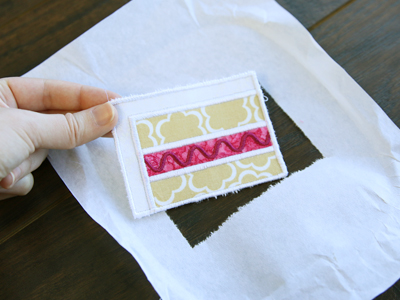
When the embroidery is finished, unhoop the stabilizer and gently tear it away from the edges. Make sure to leave the tearaway stabilizer on the back of the fabric piece as this will add a little bit of structure to the cake pincushion.
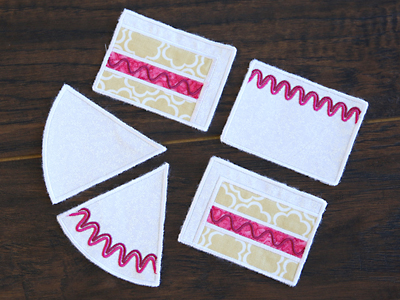
Repeat the previous steps to embroider the other four fabric pieces of the cake (b, c, d, & e). Once they are finished being embroidered, tear away the excess stabilizer.
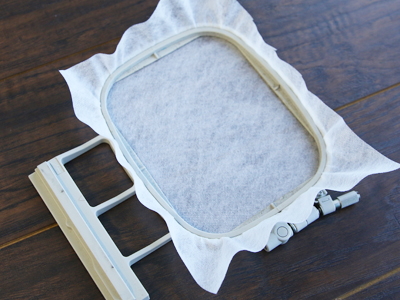
To embroider the lace pieces, hoop a piece of water soluable stabilizer tightly. There are a couple of different kinds of water-soluble stabilizer. One is clear and plastic, and that brand is Sulky Ultra Solvy. The other is soft and fibrous, called Vilene. Both will work very well. Vilene is used in this demonstration.
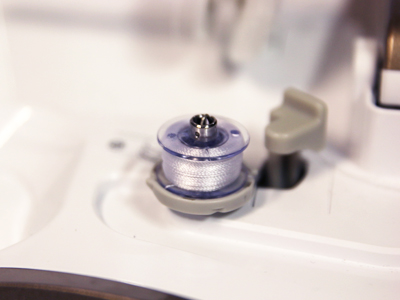
Freestanding lace is seen from both sides, so wind a bobbin with the same thread that you're using in the needle.
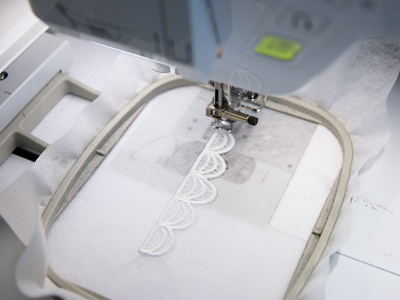
Attach the hoop, load the lace embroidery file (labeled with an "f"), and embroider the design.
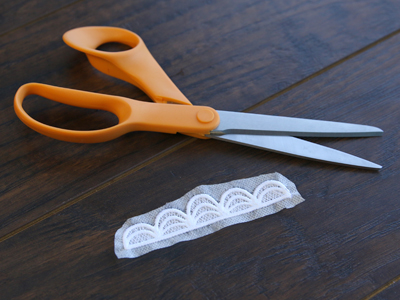
After the embroidery is finished trim away the excess stabilizer.
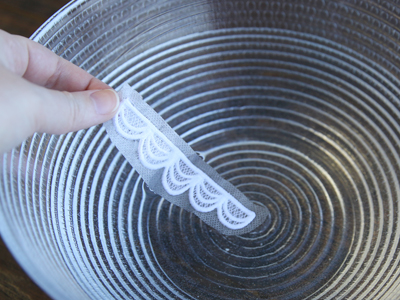
The stabilizer's packaging should give instructions for removing the excess. For Vilene, soak the lace pieces for a few moments.
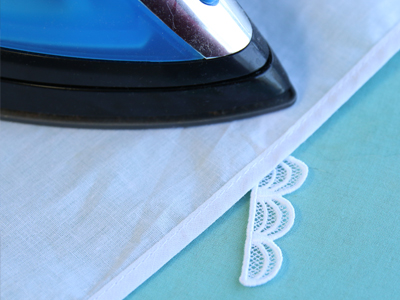
Allow the lace to air dry, and then press the lace with a pressing cloth on top.
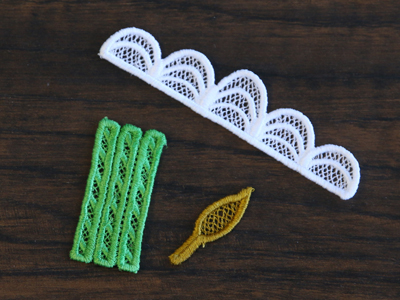
Repeat to sew the other two lace pieces (g & h).
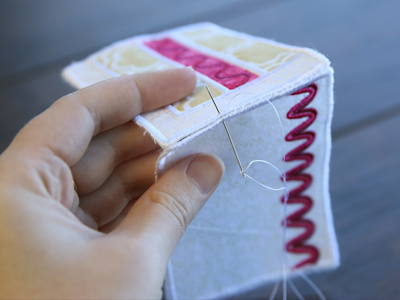
Now that all the embroidered pieces are finished, it's time to start assembling the cake.
Take the first side of the cake (piece "a") and the back of the cake (piece "c"), and line up the short edges with wrong sides together. Make sure to look at each piece carefully, and locate what is the top edge of each piece. Then make sure that the top edges of each piece are also lined up to prevent one piece from being sewn on upside down.
Once both pieces are lined up, sew the two pieces together along the short edge with the icing fabric on the side piece.
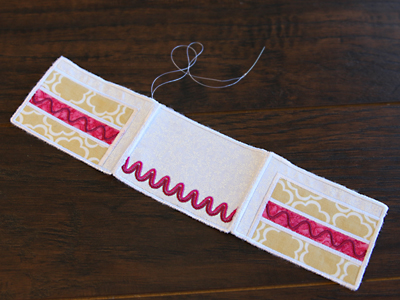
Repeat to add the other side piece (piece "b") to the opposite short edge on the back piece ("c"). Again, be careful to not sew the side on upside down.
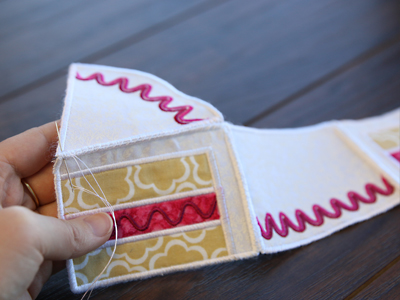
Now take the top of the cake (piece "d"), and line up a straight edge with the top edge of one of the sides. Make sure the curved side of the top piece is next to the back piece ("c"). Hand sew along the straight edge to connect the top piece to the side piece.
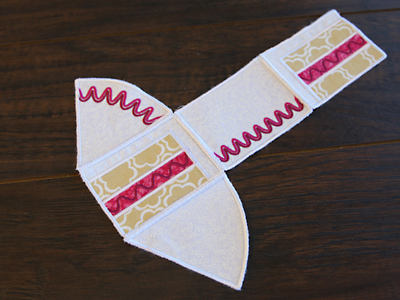
Then repeat to add the bottom piece to the bottom edge of the same side. Make sure the curved side of the bottom is next to the back piece.

Take the lace icing (piece "f"), and line up the straight edge with the top edge of the back piece ("c"). Make sure the wrong side of the lace is facing the same direction as the right side of the back piece. Hand sew the lace to the top edge of the back piece.
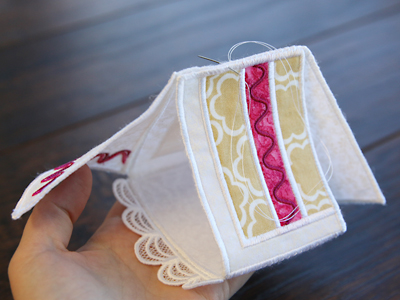
Next fold the pieces in, and line up the two remaining short edges of both sides ("a" & "b"). Make sure that the wrong sides of the embroidery are together, and hand stitch the two sides together along the short edge.
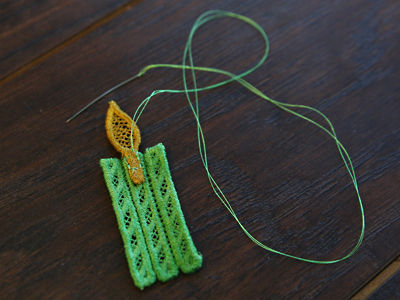
To make the candle, lay the candle stick ("g") and the flame ("h") pieces on the table with the wrong sides facing up. Set the flame on top of the candle stick. Line the flame up so that it is sitting in the middle section of the candle stick, and make sure the bottom curved edge of the flame resting right along the short edge of the candle. Hand sew the two lace pieces together using thread that matches the candle stick.

Once the flame is secure, crease the two long folds on the candle stick ("g"), and fold it up so that the two long edges meet. Hand sew the two long edges together from top to bottom.
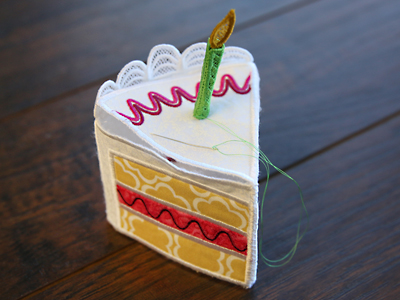
Position the bottom of the finished candle on the top of the cake. Carefully hand sew it in place, and make sure it is secure and not tipping over easily.
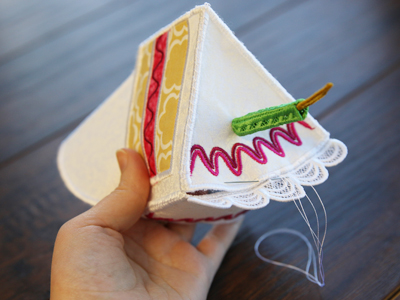
Then finish sewing the top edge of the cake onto the side and back pieces. For best results, sew along the straight side first, and then sew along the curved edge with lace icing.
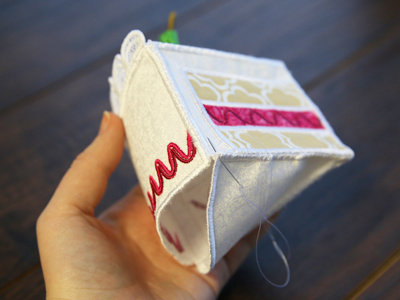
Turn the cake over, and hand sew the straight edge of the bottom piece to the straight edge of the side piece. Make sure to leave the back side open for stuffing.
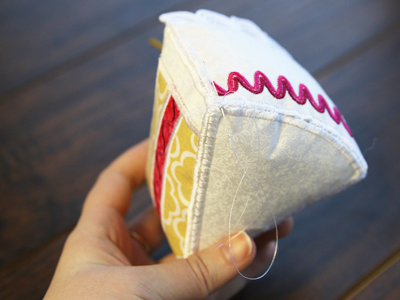
Stuff the majority of the cake with polyester fiberfill. Then sew 1/2 of the curved side to the back piece, and add more stuffing until the cake is as firm as desired. Sew the rest of the opening closed.
